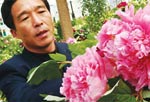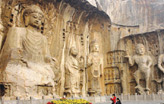Factory fever
Updated: 2011-03-11 11:39
By Patrick Whiteley and Wang Chao (China Daily European Weekly)
|
|
Despite auto manufacturing bubble scare, car giants gear up expansion of factories
Marry in Suzhou, live in Hangzhou, eat in Guangzhou and die in Liuzhou, says an old Chinese idiom reflecting the nature of these famous cities.
Suzhou is known for its beautiful people; Hangzhou is considered a paradise on earth; Guangzhou is famed for its exotic cuisine, and Liuzhou is known for its sandalwood coffins, which were believed to preserve the body after death.
But the city of Liuzhou, in the Guangxi Zhuang autonomous region in South China, is alive and kicking thanks to the auto revolution, and instead of only producing coffins, now makes the Wuling Sunshine minivan, the highest-selling passenger vehicle in the nation.
The city of 3.4 million people continues to expand and last month construction started on "Auto Town", a 203-square-kilometer industrial site with a planned capacity to produce more than 1 million complete vehicles annually by 2015.
The major players in Auto Town are SAIC-General Motors-Wuling Automobile Co (SGMW) - a joint venture among GM, Shanghai Automotive Industry Corporation (SAIC) and the Liuzhou government - and Dongfeng Liuzhou Motors. SAIC and Dongfeng also happen to be the nation's two largest car giants, which collectively produced more than 6.2 million vehicles last year.
SGMW already has a successful plant in Liuzhou producing more than 750,000 million vehicles a year and also a factory in Qingdao, in Shandong province. Last year SGMW produced a total of 1.135 million units making it the nation's largest passenger vehicle maker.
But SGMW and Dongfeng are not alone in dramatically boosting their production levels and Liuzhou is not the only city benefiting from China's car boom.
All the major Chinese car companies are expanding their production capacities to meet the insatiable demand of domestic consumers and more factories, which not only make cars, but commercial vehicles, engines and components, are being planned across the length and breadth of world's third largest nation.
Only this month, Volvo, which is now owned by Zhejiang Geely, announced plans to build a new factory in Chengdu, in Sichuan province, with the goal of selling 200,000 cars in China by 2015. The plan is very ambitious considering Volvo only sold 374,000 cars globally last year.
But as car manufacturers make hay as the economic sun shines, some auto experts fear the expansion juggernaut may turn into a motoring manufacturing bubble, the same type of bubble that burst and caused so much grief in Europe and the United States in recent years.
In January, a KPMG survey of 200 auto executives revealed that half are worried about overcapacity in China within five years.
The report says research from Bain & Co said that China could be capable of producing 40 million cars annually by 2015, and estimated that number was about 35 percent more than that the market could hold.
The cost of unused plant capacity could reduce profits and take away the advantages of producing in China, Bain says. "The industry may have to brace itself for some casualties," KPMG analysts say.
Ashley Sutcliffe, editor of China Car Times online, agrees that a bubble is forming.
"Too many factories are aiming for a massive 1 million or greater production capacity when in fact they are mostly selling around 75-80 percent of what they are producing at the moment," he says.
"Most Chinese car companies failed to meet their 2010 sales goal last year, with some just scraping over.
"The major problem is that people are not yet looking to slow growth and most consultants are looking to eternal growth."
Sutcliffe says estimates show that the Chinese market will still continue to grow but there are factors in the way that might derail or stall the growth, such as "anti-car ownership policies" that are aimed at addressing traffic congestion.
E-paper

Rise and shine
The Chinese solar energy industry is heating up following recent setbacks in the nuclear sector
Bombs aim for regime change
CSI, with a twist
Literary path
Specials

Peony express
Growers of china's unofficial national flower are reaching out to europe for help

Tea-ing up
More turning to Chinese tea for investment opportunities like vintage wine

A cut above
The ancient city of Luoyang is home to a treasure trove of cultural wonders.

